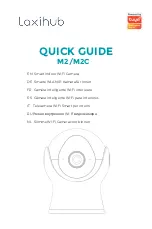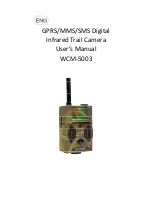
23
22
6
Lightly press shutter release button to start autofocus
operation and switch exposure meter on.
With a stationary subject, confirm that the in-focus indicator
u
appears on the viewfinder’s LCD readout. With a moving
subject, confirm that Focus Tracking indicator
y
appears.
Confirm, too, that the shutter speed and aperture indications
are shown inside viewfinder. (Exposure readouts also appear in
the camera’s external LCD panel.)
• If
†
appears, subject is located closer than the lens’ closest
focusing distance. Move away from the subject and refocus.
• If
y
blinks in the viewfinder, autofocus is not possible
(p. 38).
If
⁄
appears in the shutter speed
position–––Overexposure alert:
Use
Nikon ND or similar filter.
If shutter speed indication blinks inside viewfinder—picture blur
possibility:
The automatically selected shutter speed is 1/50 sec. or
slower and picture blur may occur due to camera shake. To reduce
possibility of blur, hold camera very steady, use a tripod or use the
built-in flash or an accessory Nikon Speedlight.
If
¤
appears in the shutter speed
position—Underexposure alert:
Use
a Nikon Speedlight, higher ISO film or
lens with faster aperture, whichever is
suitable.
If
‡
blinks in the aperture
position–––Lens setting error alert:
Lens is not set to smallest aperture
setting, so shutter is locked. Set lens to
smallest aperture.
If green
q
mark appears–––Flash-
photography recommended:
If available light is
insufficient,
q
mark appears. Use built-in flash or
accessory Nikon Speedlight.
Note on Single Servo AF with a stationary subject
After focusing is achieved and in-focus indicator
u
appears, focus is locked as long as the shutter release
button is lightly pressed. If the distance between you
and the stationary subject changes, remove your finger
from shutter release button, then lightly press it again to
refocus.
For details about Single Servo AF, see page 32.
F70D I/MêÊçsâ¸í˘ 03.1.16 5:33 PM Page 22













































